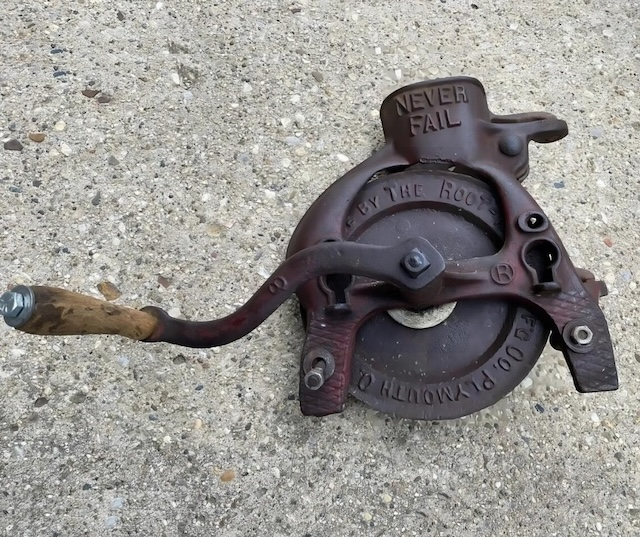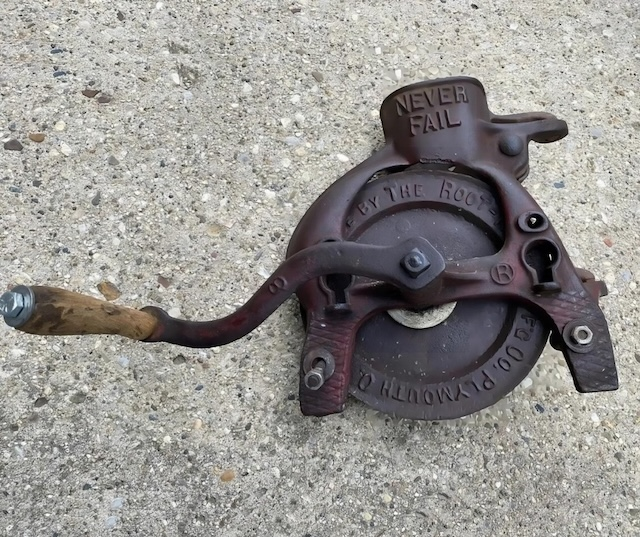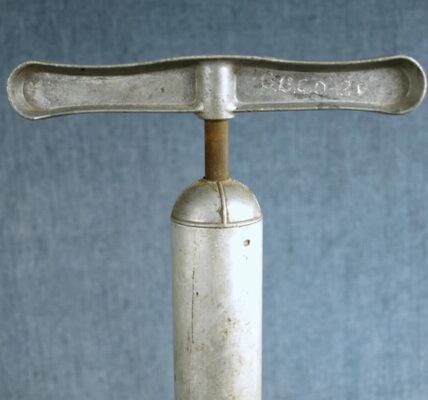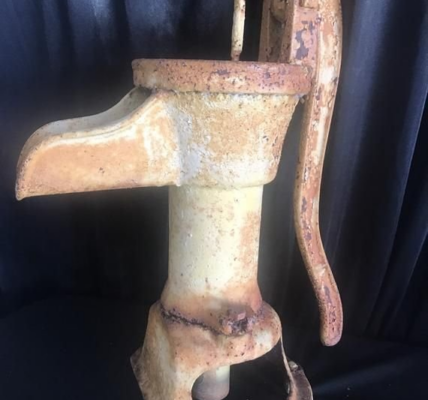Introduction: The Hand-Cranked Tool That Shaped Farming
In the realm of farming history, the vintage manual corn sheller stands out as a remarkable invention. If you’ve ever been around a farm or seen this unique tool with “NEVER FAIL” emblazoned on its side, you might recall its practical use. This hand-cranked device wasn’t just a staple on rural farms; it played a crucial role in the evolution of agriculture. Let’s explore the fascinating history and significance of the corn sheller, from its practical roots to its status as a collectible relic.

A Glimpse into Farming Before Automation
Today’s farms are characterized by advanced machinery that handles tasks with remarkable efficiency. However, in the late 19th and early 20th centuries, farming was predominantly manual and labor-intensive. Farmers relied on their hands and simple tools to get the job done. One particularly grueling task was shelling corn—the process of removing kernels from the cob. This laborious job could consume hours, especially during peak harvest times.
The History Behind the Corn Sheller
Enter the manual corn sheller, a tool designed to transform this back-breaking work into a more manageable task. This humble device was a game-changer for farmers who depended on corn for food and animal feed. By mechanizing the shelling process, it provided much-needed relief and efficiency in an era long before automation revolutionized agriculture.
The manual corn sheller, a staple on many farms from the late 1800s to the early 1900s, is a sturdy hand-cranked tool crafted from cast iron. Farmers attached it to a sturdy table, fed corn into its hopper, and turned the crank. The internal mechanism of the sheller would separate the kernels from the cob, which was then ejected for other uses like kindling or compost.
This device was a significant improvement over the manual method of scraping kernels off with a knife. Its design streamlined the process, allowing for faster and more efficient shelling. The “NEVER FAIL” slogan stamped on many models was more than just marketing—it was a promise of reliability and durability.
The Historical Significance of Corn Shellers
How It Revolutionized Farming
The story of the corn sheller begins in the early 1800s, alongside the rise of American agriculture. As farming expanded, the need for efficient tools became apparent. Early versions of corn shellers were often handcrafted and rudimentary. However, with the advent of the industrial revolution, more advanced, mass-produced models emerged.
By the mid-19th century, corn shellers became common fixtures on farms. Their design improved over time, but the basic principle remained the same. Companies like Roots Brothers from Plymouth, Ohio, produced shellers that became integral to American farm life. These tools enabled farmers to process large quantities of corn quickly, which was essential for maintaining productivity and competing in a rapidly growing agricultural market.
From Essential Tool to Vintage Collectible
From Farm Staple to Vintage Collectible
As technology advanced and farming methods modernized, the manual corn sheller gradually fell out of use. Today, while few still rely on these tools for their original purpose, they have gained recognition as collectible antiques. Their robust design and historical value have made them sought-after items for enthusiasts and collectors.
Finding a vintage corn sheller at an antique store or estate sale is like discovering a piece of living history. Many collectors restore these tools to their former glory, displaying them in homes, museums, or workshops. Their classic design and historical significance continue to captivate those interested in the evolution of agriculture and rural life.
A Piece of Agricultural Heritage
Beyond its functional role, the manual corn sheller represents a significant chapter in American agricultural history. It embodies the ingenuity of farmers who, facing the challenges of their time, developed solutions to make their work more efficient. This tool is not just a reminder of past labor but a symbol of progress and resourcefulness.
A Piece of Americana
The corn sheller’s story highlights how simple innovations can profoundly impact daily life. It reflects an era of hard work and dedication, where every tool had a purpose and every improvement was a step forward in the quest for efficiency. As we look back on these innovations, we gain a deeper appreciation for the tools that shaped the agricultural landscape and the lives of those who worked tirelessly to feed a growing nation.
Conclusion: The Legacy of the Manual Corn Sheller
The vintage manual corn sheller may appear as an artifact of a bygone era, but its legacy endures. This simple tool revolutionized the way corn was processed, making farm life more manageable and productive. For those who remember using one or who appreciate agricultural history, the corn sheller remains a testament to human ingenuity and perseverance.
Whether you’re discovering it for the first time or reminiscing about its role in your family’s farming past, the manual corn sheller stands as a proud emblem of a time when innovation and hard work went hand in hand. Its place in history is secure, serving as both a practical tool and a cherished collectible.




